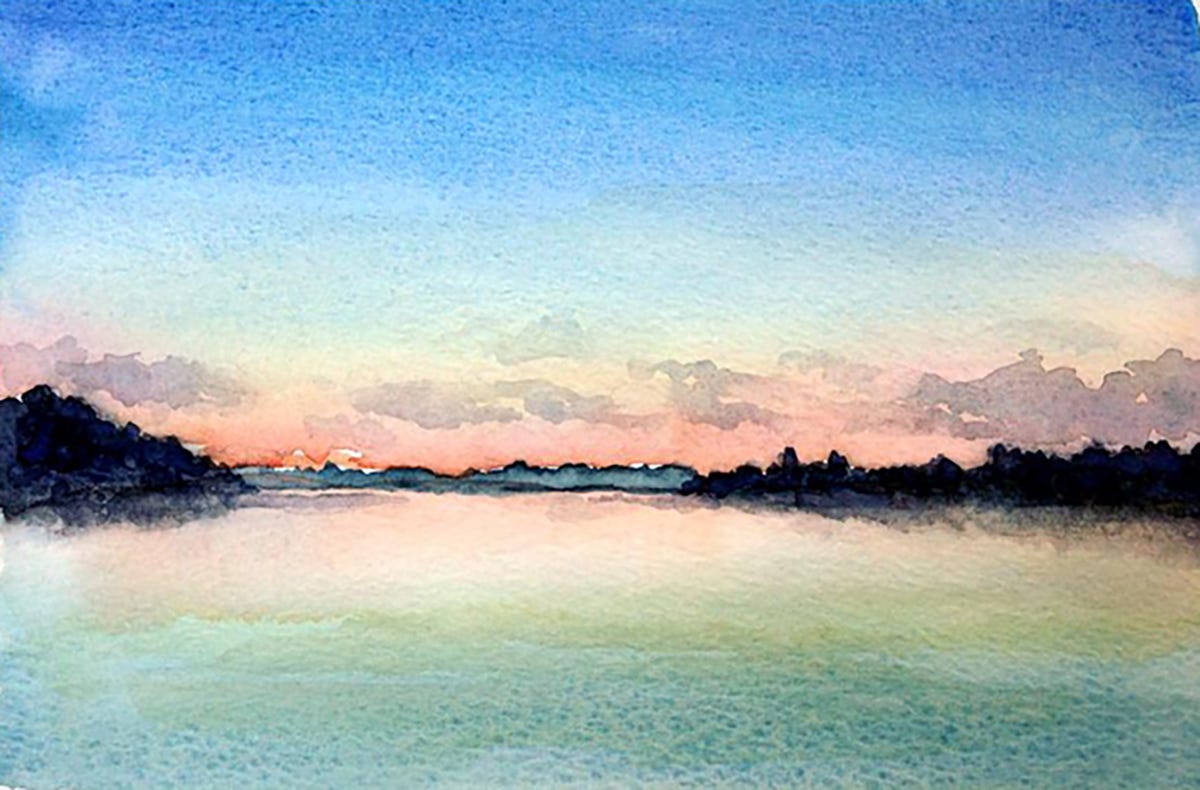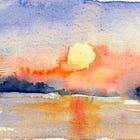Respecting the unknown by illuminating what I can
Considering St. Francis' famous prayer, line by line
Where there is darkness, light;
I love the advice to light a candle instead of cursing the darkness. And still, I forget to do it. Many wisdom traditions teach that we are, or contain, light as the fire of consciousness. My imagination interchanges light with energy with spirit: I am the stuff of the universe. I am light energy. I am animated stardust. The word, light, shows up in our language in so many ways, any one of them could be the prompt for another reflection.
We are said to be lighthearted, enlightened, to take things lightly, to shed light on a problem. Some people light up rooms, others may feel lightheaded or light on their feet. We have light in our eyes, so the phrase “lights out” refers to more than bedtime, as you know if you’ve ever had your lights punched out. A great leader is a guiding light. We “see the light” or “see in a new light” when we understand anew. Near death experiences approach a bright light. Revelations “come to light,” or we might see the “light at the end of the tunnel” after a long project or struggle.
Though I may resist it, darkness is as familiar as light. After all, it’s a condition of life on this planet that half our time is spent in darkness, much of in the sleep of darkness wrapped in darkness. We equate darkness with unconsciousness, light with awareness. This condition binds us to the physical realities of life on a planet spinning around a star and also reveals a poetic response to the mysterious dance of inner and outer, spirit and matter.
Visions tend to include, or be made of, light. I once experienced full immersion in a globe of yellow light, which I knew to be the life force of love suffusing everything we accept as “normal” and separate in the day world. I’ve spilled countless words attempting to wash the ineffable qualities of this light onto pages and screens. The closest I’ve come is the short essay, “Three Lights.”1
“If everything around seems dark, look again, you may be the light.” ~ Rumi
Tending my own inner light begins with lighting a candle at my pre-dawn writing table, where I record my dreams, review the day before, and listen for guidance or, if I’m lucky, wisdom. Movement—yoga or weightlifting or running—helps me to stoke my inner fire and align my body’s energies. During the day, I tend to focus more on the light of the mind: surfing my curiosity, encountering new ideas, mentoring young people on their projects. I wish I could report an evening practice that grounds and readies me for night travels in the unconscious. But no. Lately, I’ve been watching episodes of “Tracker.”2
As with all the pairings of St. Francis’ prayer, it’s best to embrace the both/and of darkness and light. Our modern world, denies darkness 24/7. From candles to lamps to the operating-room retail lighting, to screens and streetlights, flashlights and films. Our cities never sleep.3
What is the price we pay for this enforced awakeness, this constant consciousness? Neglected, even negated, the unconscious stirs. My inner darkness demands attention, and it always finds a way: through dreams, sudden emotional outbursts, irrational behavior, vicarious entertainment, illness, depression.
“One does not become enlightened by imagining figures of light, but by making the darkness conscious.” ~ Carl Jung
Jung’s observation conjures the image of a seeker entering a dark cave, lantern extended in a trembling hand, hoping to find a clear stream to peer into, a shadowy reflection, a source from which to drink.
I don’t imagine St. Francis advising the banishment of darkness. I think he would do more than let it alone; he would give it its due. His choice to sow light, both within himself and in service to others, was surely made with full knowledge and acceptance of his own darkness. Today, I will light a candle instead of cursing my darkness. I will pay respect to the unknown realm of mystery and madness and to the brightly lit, loving realm of consciousness.
The previous line of the prayer, Where there is despair, hope, is here.
Start at the beginning of the series:
If you enjoyed this post, a lovely ❤️ keeps me going. Another way to show love is to share this post with others by restacking it on Notes, via the Substack app. Thanks!
Yes, it’s a terrible show. The best I can say is that it feeds my need for the closure of good guys winning. Also, Justin Hartley.
The best New York song is Jay-Z’s “Empire State of Mind” Who can resist the chorus: “These streets will make you feel brand new / Big lights will inspire you / Let’s hear it for New York, New York, New York.”





This is lovely, and had me sending screenshots to loved ones this morning! It also got me thinking about the complicated nature of the light/darkness dualism. The way it's been associated with both gendered and racial hierarchies, which continually troubles me. And that got me thinking about Taoist teachings (among others!) that value the balance of light and dark, of yin and yang, of inner and outer, of male and female, and teach that these things are in a constant state of transformation, that balance is a dynamic state. And THEN I started re-reading this poem, as less of longing to counteract or nullify one state of being (sadness = bad, joy = good), and more about a prayer to bring BALANCE. Thank you so much for these meditations! They are so inspiring, and really helpful to give a focus for reflection! This is wonderful.
Just before my last overseas assignment, a friend from USAID called to wish me Godspeed, for which I was grateful. Then she asked if I would mind hearing something from her Friend tradition. Of course I wanted to hear.
She said she prayed that I would stay in the Light as I took on my new responsibilities. Little did I know how deeply she touched me with her words as I found myself in the depths of darkness. But I lived with the determination to either be in the Light and to progress toward it.
She’ll never know how her gift of words kept me from drowning in the darkness.